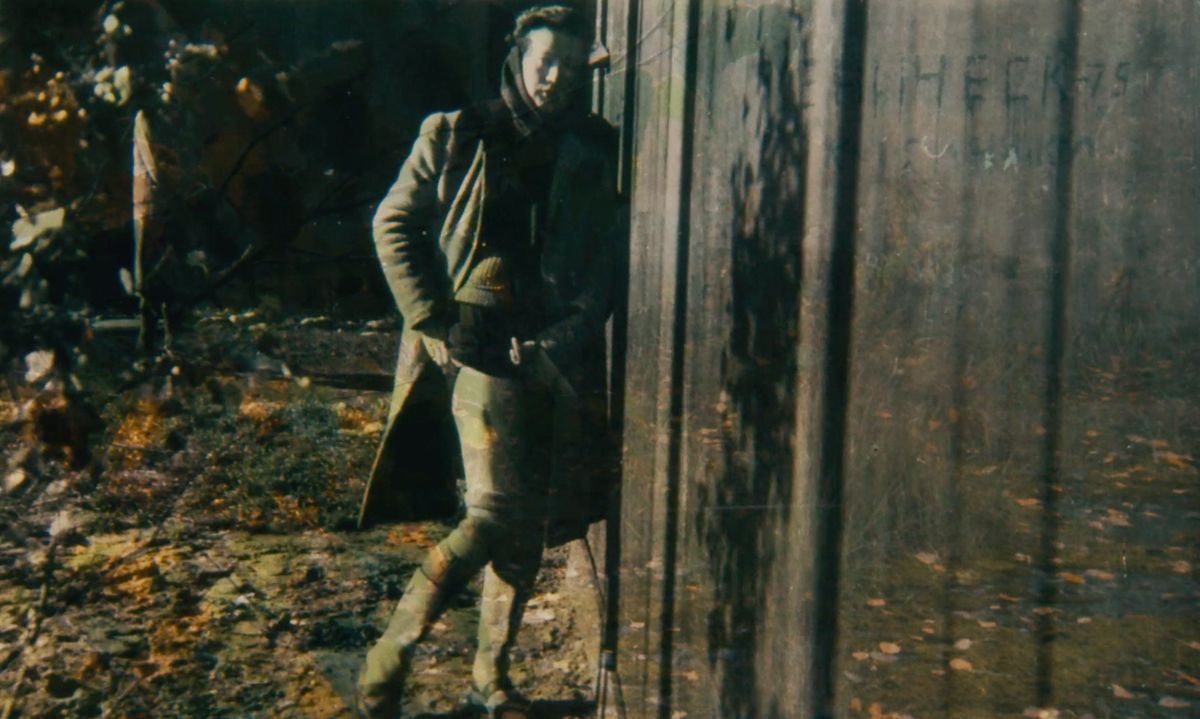Foremost among the art films that premiered at the 2021 Berlin International Film Festival last week was À Pas Aveugles (From Where They Stood) a documentary by the French film-maker Christophe Cognet that focuses on the photographs taken by prisoners in Nazi concentration camps and in the Birkenau death camp.
Cognet’s rigorously reconstructs the places where the pictures were shot in secret, identifies the people who took them, shows how they might have obtained and concealed cameras, and places the picture-taking in the wider context of Nazi forced labour and extermination.
Since the Germans destroyed many of the camps as Allied troops approached, part of Cognet’s project became an archaeology of vanished sites that are now highly groomed monuments. Like crime scene reconstructions, each of these landscapes frames a microhistory of horror, not least in Birkenau, where fragments of charred bones still rise from mass graves when it rains.
The image of women undressing before they enter gas chambers at Birkenau (probably shot from inside the gas chamber) will be familiar to some, as will scenes of prison labourers preparing open-air cremations. Cognet also includes an improbable snapshot of a prisoner at Buchenwald sunbathing near a smokestack, as well as a series of posed full length shots of female prisoners who survived medical experiments in Ravensbrück, with stolen stockings rolled down to reveal the scars where Nazi doctors operated.
Stories emerge. We learn that the prisoners sometimes obtained cameras from new arrivals to the camps, or from supplies given to prisoners with designated jobs, or, in the case of Birkenau, through resistance groups inside the camp.
The reconstruction of who took which pictures and where they stood, and how smuggled film survived and surfaced beyond the camps opens a new chapter in Nazi-era provenance research. The documentary could also help reconfigure the history of photographs from that time and those places.
Cognet’s previous film, Because I was a Painter (2014), examined portraits that Boris Taslitzky, who was deported from France, drew of fellow prisoners in Buchenwald in 1944.
In From Where They Stood, Cognet—calling himself a surveyor, or arpenteur in French—builds his visual fragments into constellations of life and death from the prisoners’ perspective, sometimes superimposing their photographs over the footage of those exact spaces in the camps today, where tourists take their own pictures. The overlays play like haunting special effects.
Like the charred bone fragments in Birkenau, the photographs are objects that sustain the memory of the victims, in spite of Nazi efforts to erase all signs of the Holocaust.
Coming to the festival from Russia, meanwhile, was Doch Rybaka (Tsareevna Scaling), directed, written and edited by Uldus Bakhtiozina, offering a mix of homage and mockery of Tsarist fashion. Bakhtiozina, who is also a fashion designer photographer, structures her debut feature film as a scripted dream narrative about aspiring to be a Tsar’s daughter, and fulfilling the requirements of that position. That requires elaborate costumes that draw on court finery and folklore, and the glittery kitsch of contemporary pop culture where even teeth are magnificently jewelled. The dazzling costumes, including swan bathing suits and caps, also add a comic element, as the film alludes to everything from Alice in Wonderland to the romantic comedy romp Austenland to 21st-century fashion fails. Men do make a brief appearance in this story by and about women as a dance troupe of white lambs.
And finally Ich Bin dein Mensch (I’m Your Man), directed by the German actress Maria Schrader, is a romantic comedy about love in the time of tech for a woman studying ancient ruins. A scientist at the Pergamon Museum in Berlin funds her research by joining a study in which she agrees to live with a handsome male robot—think Pygmalion meets Faust. Set around and sometimes in the museum, it is also a fable about artificial intelligence and artificial humanity, or the creation of a complete person, surrounded by the fragmented and reassembled ruins of past cultures. Most memorable are scenes that make the museum a stage set as the director and her team struggle to bring lightness to a German rom-com.


